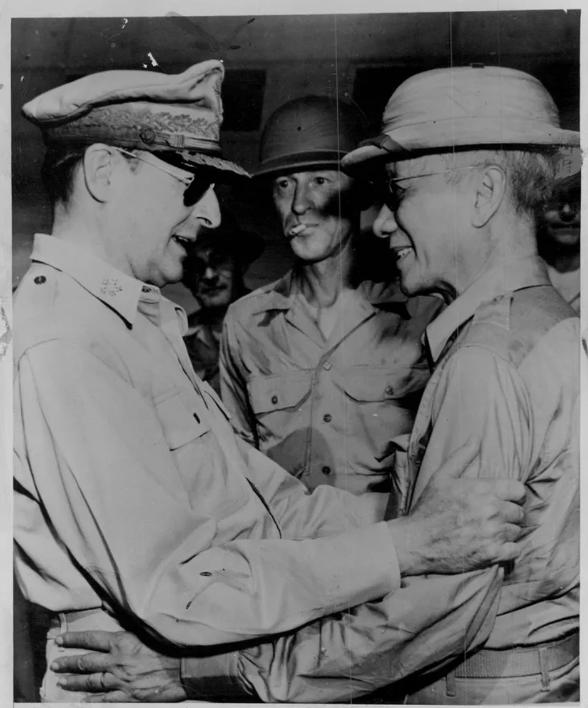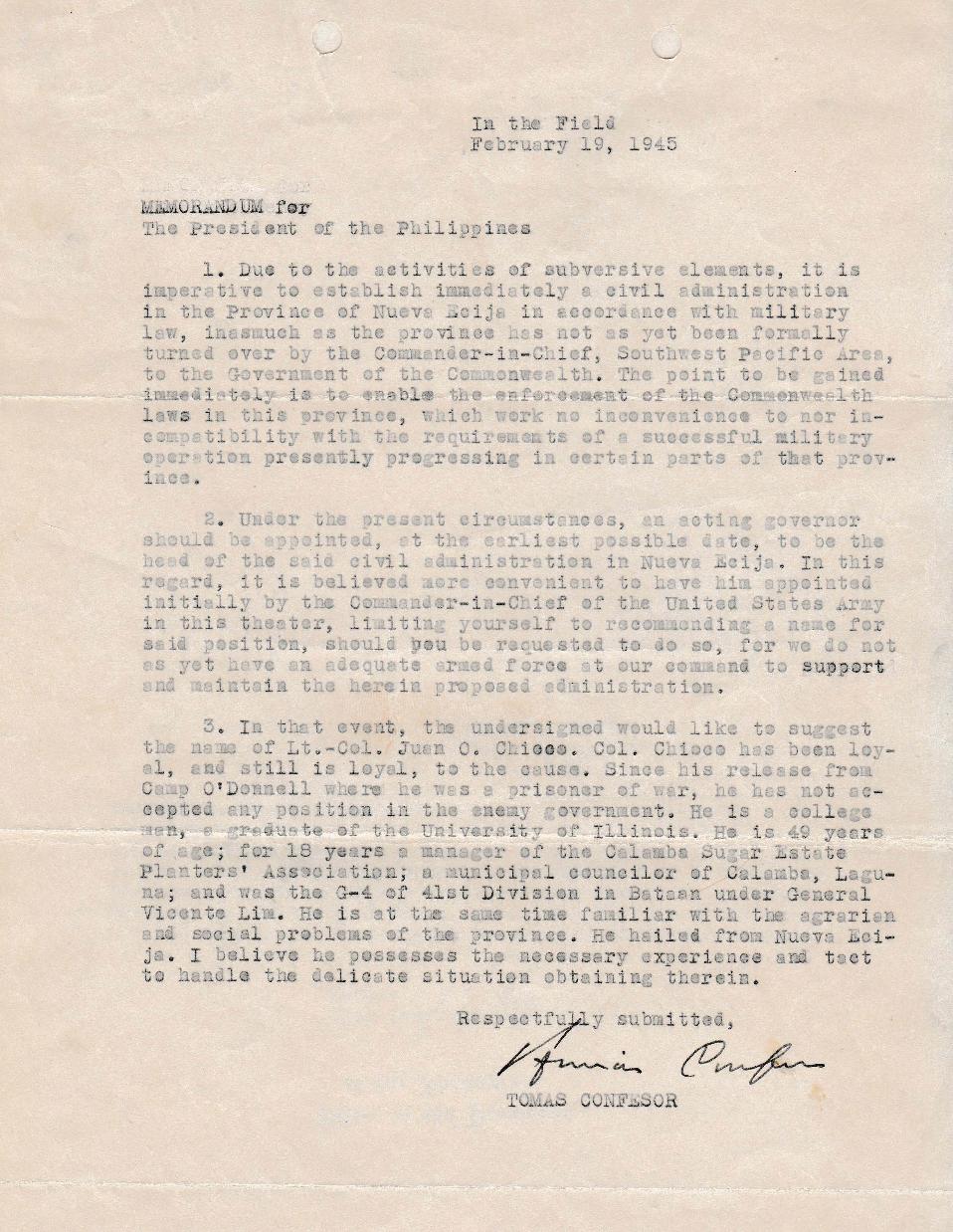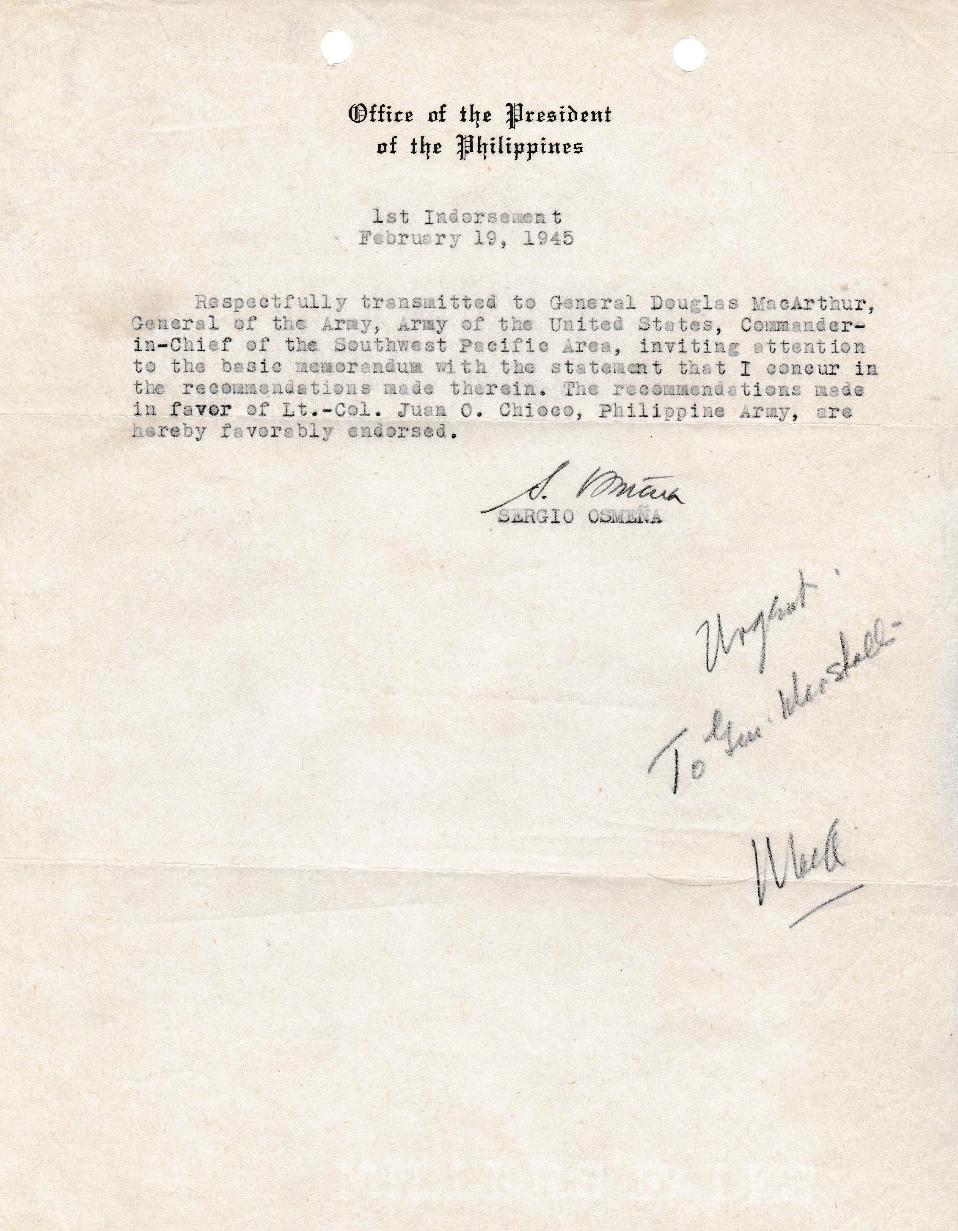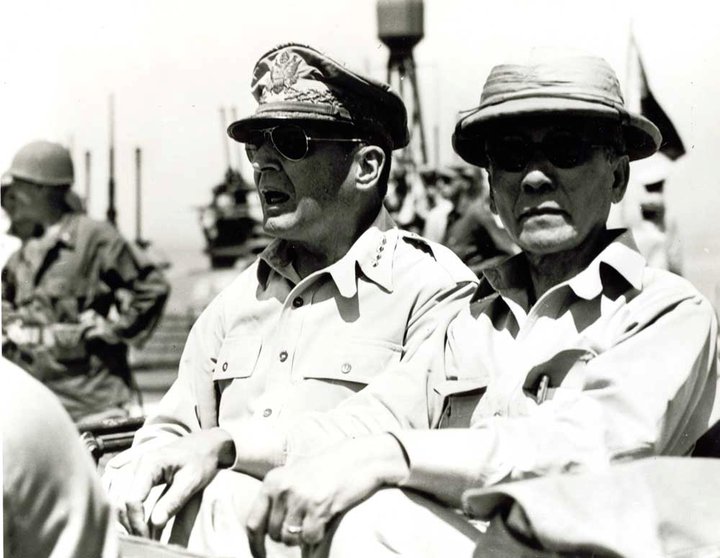MacArthur Sends General Marshal Recomendation From President Osmena, 1945

War came suddenly to the Philippines on Dec. 8 (Dec. 7, U.S. time), 1941, when Japan attacked without warning. Japanese troops invaded the islands in many places and launched a pincer drive on Manila. MacArthur’s scattered defending forces (about 80,000 troops, four fifths of them Filipinos) were forced to withdraw to Bataan Peninsula and Corregidor Island, where they entrenched and tried to hold until the arrival of reinforcements, meanwhile guarding the entrance to Manila Bay and denying that important harbor to the Japanese. But no reinforcements were forthcoming. The Japanese occupied Manila on Jan. 2, 1942. MacArthur was ordered out by President Roosevelt and left for Australia on Mar. 11 and Lt. Gen. Jonathan Wainwright assumed command.
The besieged U.S.-Filipino army on Bataan finally crumbled on Apr. 9, 1942. Wainwright fought on from Corregidor with a garrison of about 11,000 men; he was overwhelmed on May 6, 1942. After his capitulation, the Japanese forced the surrender of all remaining defending units in the islands by threatening to use the captured Bataan and Corregidor troops as hostages. Many individual soldiers refused to surrender, however, and guerrilla resistance, organized and coordinated by U.S. and Philippine army officers, continued throughout the Japanese occupation.
Japan’s efforts to win Filipino loyalty found expression in the establishment (Oct. 14, 1943) of a “Philippine Republic,” with José P. Laurel, former supreme court justice, as president. But the people suffered greatly from Japanese brutality, and the puppet government gained little support. Meanwhile, President Quezon, who had escaped with other high officials before the country fell, set up a government-in-exile in Washington. When he died (Aug., 1944), Vice President Sergio Osmeña became president. Osmeña returned to the Philippines with the first liberation forces, which surprised the Japanese by landing (Oct. 20, 1944) at Leyte, in the heart of the islands, after months of U.S. air strikes against Mindanao. The Philippine government was established at Tacloban, Leyte, on Oct. 23.
The landing was followed (Oct. 23–26) by the greatest naval engagement in history, called variously the battle of Leyte Gulf and the second battle of the Philippine Sea. A great U.S. victory, it effectively destroyed the Japanese fleet and opened the way for the recovery of all the islands. Luzon was invaded (Jan., 1945), and Manila was taken in February. On July 5, 1945, MacArthur announced “All the Philippines are now liberated.” The Japanese had suffered over 425,000 dead in the Philippines. The Philippine congress met on June 9, 1945, for the first time since its election in 1941. It faced enormous problems. The land was devastated by war, the economy destroyed, the country torn by political warfare and guerrilla violence.
Tomas Confesor was on his second term as a governor of Iloilo when the Pacific War broke. During the Japanese occupation, he was invited to serve the puppet Cabinet, but he declined. This angered the Japanese, who harassed him thereafter. Conscious of his patriotic duty, Confesor left Manila and secretly returned to his home province, where he organized his own underground movement. Upon learning of his activities in Iloilo, President Quezon immediately named him "wartime governor of Free Panay and Romblon." Throughout the occupation, Confesor chose to lead his guerrillas in fighting the Japanese, for he believed that it was better "to suffer in honor than to enjoy life in ignominy."
In February, 1945, Confesor sent this memorandum to President Osmena recommending that a former guerilla leader, Lt. Col. Juan O. Chioco, who had been imprisoned by the Japanese at Camp O'Donnell, be appointed Governor of the Province of Nueva Ecija. President Osmena forwarded the recommendation to General Douglas MacArthur as Commander-In-Chief of the Southwest-Pacific Area (SWAPA) with a cover note endorsing the appointment. General MacArthur wrote in pencil on the document, "Urgent! To General Marshall", signed "MacA."



President Sergio Osmena with General MacArthur

Guerilla Leader Tomas Confesor with President Sergio Osmena